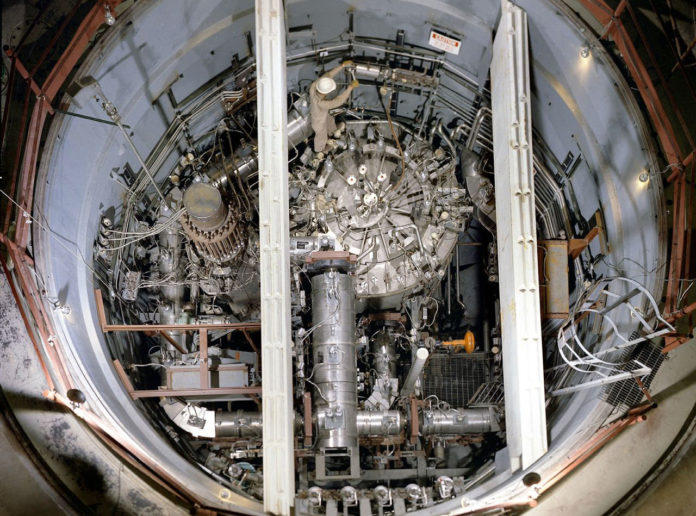A team of government researchers in China have unveiled the design for a first-of-its-kind, experimental nuclear reactor that does not need water for cooling, allowing the systems to be built in remote desert regions to provide power for more densely populated areas. This also makes the reactor much smaller, safe, and easier to build than a conventional nuclear reactor.
The prototype molten salt nuclear reactor is powered by liquid thorium rather than uranium. It is expected to be safer than traditional reactors because the molten thorium cools and solidifies quickly when exposed to the air, meaning any potential leak would spill much less radiation into the surrounding environment compared with leaks from traditional reactors.
The Chinese government is about to finish the construction of the prototype waterless nuclear reactor that will start operating this September. The plan is to collect as much information as possible about this technology for a future commercial launch. China expects to build its first commercial molten salt nuclear reactor by 2030 in the desert city of Wuwei. Also, the Chinese government has plans to build more across the sparsely populated deserts and plains of western China.
The new molten reactor system works by allowing thorium to flow through the reactor, participating in a nuclear chain reaction, and transferring the heat to a steam generator outside. The thorium then returns to the reactor, and the cycle continues.
The concept of a reactor powered by liquid salt rather than solid fuel first appeared in the 1940s. However, the early experiments failed because they could not solve problems such as pipes cracking because they had become corroded by the radioactive molten salt. But in recent years, the developments in the field have made molten salt nuclear reactor more feasible, leading to the planned construction of the first such reactor in China.
“Small-scale reactors have significant advantages in terms of efficiency, flexibility, and economy,” Yan Rui, a physics professor at the Shanghai Institute of Applied Physics, and colleagues wrote in a paper about the project in the journal Nuclear Techniques. “They can play a key role in the future transition to clean energy. It is expected that small-scale reactors will be widely deployed in the next few years.”
According to the reports by the South China Morning Post, the construction of the 2MW prototype reactor is due to wrap up next month, and the first tests could begin as soon as September. If it succeeds, it will be the first time theory has been put into practice.
According to the government researchers, commercial thorium nuclear reactor will be capable of generating 100 MW of electricity, enough to provide power for 100,000 people. The reactor will measure only 3 meters tall and 2.5 meters wide, though it will need to be paired with other equipment, such as steam turbines, to make usable electricity.
China has some of the world’s largest reserves of thorium, a silvery metal with weak radioactivity. By some calculations, it has enough to meet the country’s energy needs for at least 20,000 years.
